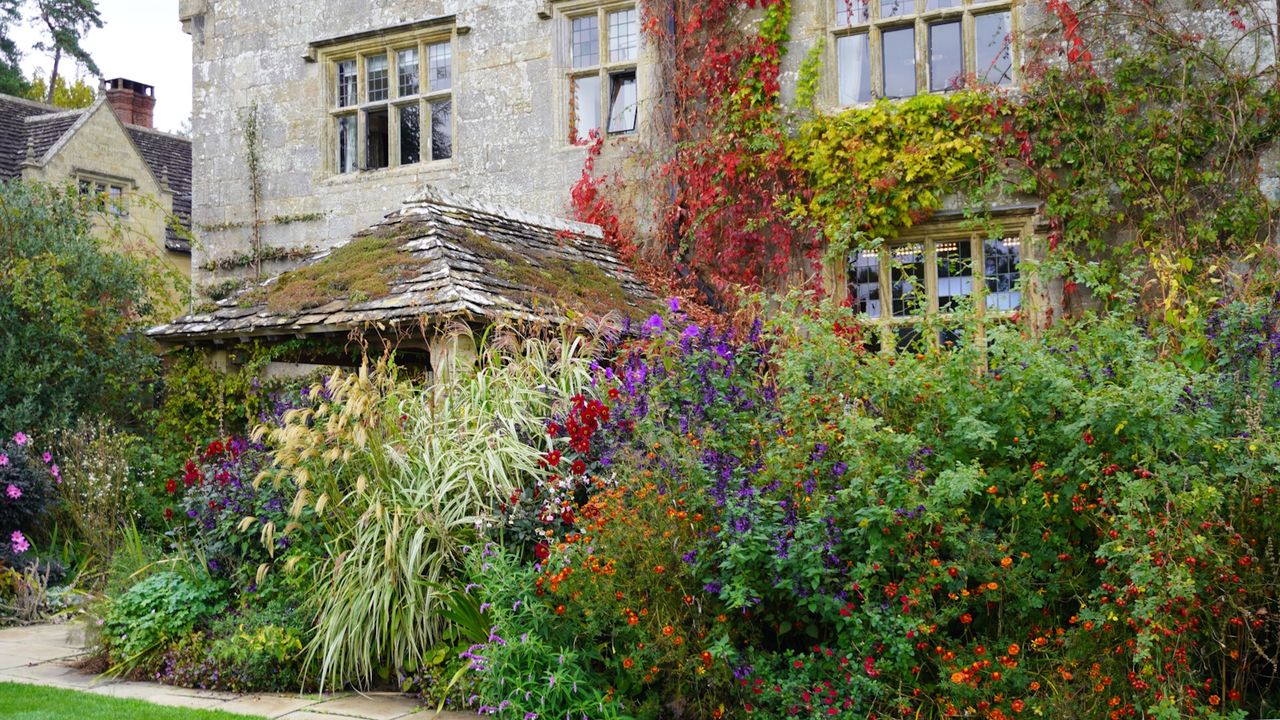Lifestyle
Transform Your Garden with Ideas from Gravetye Manor’s Arts and Crafts Legacy

The legacy of the Arts and Crafts movement continues to inspire garden design, as seen in the historic Gravetye Manor in Sussex, England. Recently, I explored this significant site, which has profoundly influenced modern gardening philosophies. Originally established by horticulturalist William Robinson, Gravetye Manor embodies a shift from rigid Victorian gardening to a more naturalistic approach that emphasizes the garden as an extension of the home.
Robinson acquired the Elizabethan estate and its expansive grounds in 1884, transforming it into a horticultural laboratory where he introduced groundbreaking concepts such as wild gardening. His innovative practices laid the groundwork for the Arts and Crafts movement, which sought to integrate nature into everyday life. Gertrude Jekyll, a prominent figure in this movement, frequently visited Gravetye Manor, drawing inspiration from Robinson’s pioneering ideas.
One of the key principles that emerged from Gravetye Manor is the idea of the garden as a series of “rooms.” This concept involves creating distinct areas within the garden, each serving a specific purpose, much like the rooms in a house. The layout at Gravetye features a vibrant flower garden, a croquet lawn for events, and a woodland garden that showcases stunning autumn colours.
Incorporating Arts and Crafts Garden Ideas
These principles can be applied to any garden, irrespective of size. Here are three practical ideas inspired by Gravetye Manor that can help transform your outdoor space.
1. **Create Garden Rooms**
The separation of garden areas into distinct zones promotes functionality and aesthetic appeal. At Gravetye Manor, meandering paths guide visitors through various planting areas, including a mixed flower border and a serene summer house. For smaller gardens, consider using trellises or hedges to create privacy and define separate areas. This structure allows for a vegetable patch in one corner or a seating area surrounded by lush planting for relaxation.
2. **Bring the Outdoors In**
A seamless connection between the home and garden enhances the overall living experience. Gravetye Manor’s kitchen garden serves as a source for both produce and beautiful blooms. Homeowners can replicate this by cultivating cutting flowers such as dahlias or zinnias, which can easily be arranged indoors. Additionally, seasonal displays featuring homegrown fruits and vegetables not only beautify the space but also offer a rewarding connection to gardening.
3. **Plant Naturalizing Bulbs**
The concept of naturalistic planting is central to the design philosophy at Gravetye Manor. Robinson’s focus on native plants and hardy perennials creates an enduring landscape. Home gardeners can achieve a similar effect by planting naturalizing bulbs that thrive and multiply over the years. Options like tulips, daffodils, and crocus provide vibrant spring displays, while requiring minimal maintenance once established.
Embracing the Arts and Crafts Aesthetic
In addition to outdoor gardening, the Arts and Crafts movement’s influence extends to interior design. For instance, Gravetye Manor’s guest rooms are named after fruit trees found in the garden. This connection emphasizes the importance of nature in every aspect of life. To adopt this philosophy indoors, consider using floral patterns for wallpaper or incorporating natural materials in your decor.
The approach championed by William Robinson at Gravetye Manor remains relevant today, encouraging gardeners to embrace nature and craftsmanship. By applying these three ideas, anyone can create a space that reflects the essence of the Arts and Crafts movement, blending the beauty of the outdoors with the comforts of home.
-

 Science2 weeks ago
Science2 weeks agoIROS 2025 to Showcase Cutting-Edge Robotics Innovations in China
-

 Politics2 weeks ago
Politics2 weeks agoJudge Considers Dismissal of Chelsea Housing Case Citing AI Flaws
-

 World2 weeks ago
World2 weeks agoBravo Company Veterans Honored with Bronze Medals After 56 Years
-

 Health2 weeks ago
Health2 weeks agoStartup Liberate Bio Secures $31 Million for Next-Gen Therapies
-

 Lifestyle2 weeks ago
Lifestyle2 weeks agoStone Island’s Logo Worn by Extremists Sparks Brand Dilemma
-

 Top Stories2 weeks ago
Top Stories2 weeks agoIndonesia Suspends 27,000 Bank Accounts in Online Gambling Crackdown
-

 Health2 weeks ago
Health2 weeks agoTop Hyaluronic Acid Serums for Radiant Skin in 2025
-

 Sports2 weeks ago
Sports2 weeks agoMel Kiper Jr. Reveals Top 25 Prospects for 2026 NFL Draft
-

 World2 weeks ago
World2 weeks agoHoneywell Predicts Record Demand for Business Jets Over Next Decade
-

 Sports2 weeks ago
Sports2 weeks agoYamamoto’s Mastery Leads Dodgers to 5-1 Victory in NLCS Game 2
-

 Lifestyle2 weeks ago
Lifestyle2 weeks agoMary Morgan Jackson Crowned Little Miss National Peanut Festival 2025
-

 Science2 weeks ago
Science2 weeks agoArizona State University Transforms Programming Education Approach








